How to Add a web.config Modification Using PowerShell
Background
Please see How to modify a web.config file using PowerShell for some additional background information about why you should modify your web.config file(s) programmatically.
Many Bamboo products implement Telerik controls and install a specific version of Telerik.Web.UI assembly to the SharePoint farm. If the farm already has a different version of Telerik.Web.UI assembly, this may cause a conflict and you may see errors on SharePoint pages where you use these controls.
Resolution
To resolve this problem, we need to add an assembly binding to the web.config to specify which version to use. However, adding text by manually editing a web.config file is not recommended because it is not synced across the servers in the farm and is not saved in the SharePoint configuration database.
The best way to modify a web.config file programmatically is via PowerShell.
NOTE: Be extra careful when making changes to the web.config. Backup your file before changing it. Do not add or remove something unless you are absolutely sure what it is.
To demonstrate, we will use an example with Telerik controls. Consider this scenario:
Before a Bamboo product is installed, a server has Telerik.Web.UI version 2012.3.1016.35 previously installed. During the Bamboo product installation process, Telerik.Web.UI version 2011.2.915.35 was installed. Although it is OK to have multiple Telerik versions on a single server, it may cause a conflict in SharePoint.
We need to add an assembly binding to the web.config to tell the assemblies looking for version 2011.2.915.35 to use version 2012.3.1016.35. The assembly binding addition to the web.config file will look like this:
<dependentAssembly>
<assemblyIdentity name "Telerik.Web.UI" publickKeyToken "121fae78165ba3d4" culture "neutral" />
<bindingRedirect oldVersion "2011.2.915.35" newVersion "2012.3.1016.35" />
</dependentAssembly>
NOTE: Always redirect all versions found to the newest version of Telerik.Web.UI on the system, for backwards compatibility of functionality.
| Step |
Action |
| 1. |
First, open the SharePoint 2010 Management Shell. From the Start menu, select All Programs > Microsoft SharePoint 2010 Products > SharePoint 2010 Management Shell. |
| 2. |
Next, create the SPWebConfigModification object for the assembly binding

Where:
- Path: A string that contains an XPath expression that specifies the node. If the Type property specifies EnsureChildNode, the Path property contains the XPath expression for the parent node under which the node is created. In this example, the runtime element of the web.config file is placed in another xml-namespace, so we have to identify the namespace. Otherwise, that element will not be found.
- Name: A string that contains the name of the attribute or section node. When the type of web.config modification is EnsureChildNode, the Name property refers to an XPath expression that uniquely identifies the node under the parent node, as identified by the Path property.
- Sequence: A 32-bit unsigned integer between 0 and 65536. This property throws an InvalidOperationException if the number is outside this range. A sequence is used only if there is more than one modification of the same type to the same node or attribute. In this case, modifications with lower sequence numbers are applied first.
- Owner: A string that specifies the owner of the modification. You can use the Owner property to track ownership of modifications.
- Type: An SPWebConfigModification.SPWebConfigModificationType value that specifies the type of modification. There are 3 types:
- EnsureChildNode: Specifies that the web.config modification must ensure the existence of a child node of the node to which the XPath expression points. Value = 0.
- EnsureAttribute: Specifies that the web.config modification must ensure that there is a value for a particular attribute. Value = 1.
- EnsureSection: Ensures a singleton node. This node is only written once, even if multiple entities register multiple instances of EnsureSection to ensure the existence of a section. Value = 2.
- Value: If the Type property specifies EnsureChildNode, the Value property contains an XML string that represents the node to be populated as a child of the specified parent node. If the type is EnsureSection, Value contains the name of the section. If the type is EnsureAttribute, Value contains the value set in the attribute.
|
| 3. |
Then, apply the modification to the Web application (replace ‘WebApplicationURL’ with the actual URL of the Web application).

NOTE: Bamboo products are only tested with the Telerik version that they install. Therefore, if a newer Telerik version is used, there might be some unexpected problem.
|
 The top navigation is shared with all pages in the Community Central Home site. To customize the top navigation and change link names, add or remove links, and even include links to sites outside Community Central, follow the instructions below.
The top navigation is shared with all pages in the Community Central Home site. To customize the top navigation and change link names, add or remove links, and even include links to sites outside Community Central, follow the instructions below.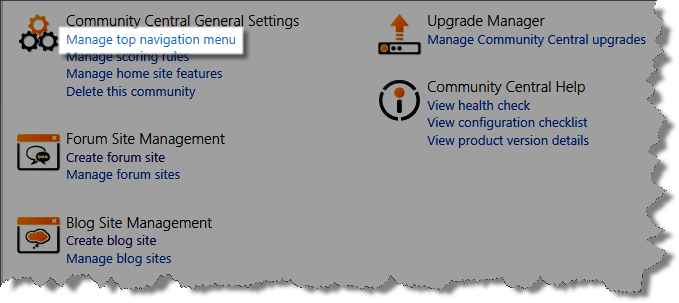

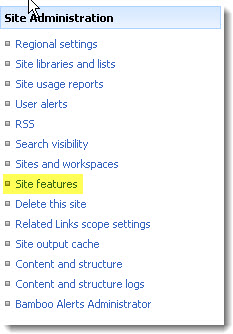
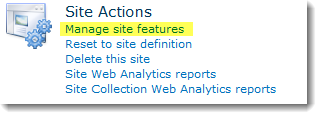



 The main benefits in Community Central are the features and functions of the forums/discussion boards. Out-of-the-box Discussion Board allows organization and team to collaborate, to share information, and discuss topics with other people.
The main benefits in Community Central are the features and functions of the forums/discussion boards. Out-of-the-box Discussion Board allows organization and team to collaborate, to share information, and discuss topics with other people. The main content area of the forum site or blog site home page contains a list of all forums or blogs in the site.
The main content area of the forum site or blog site home page contains a list of all forums or blogs in the site.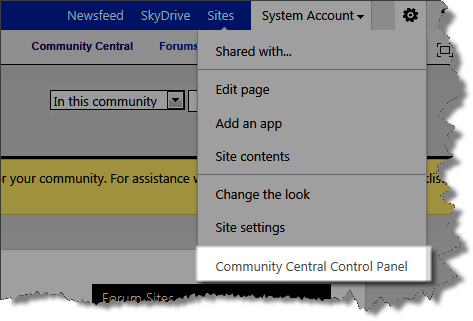
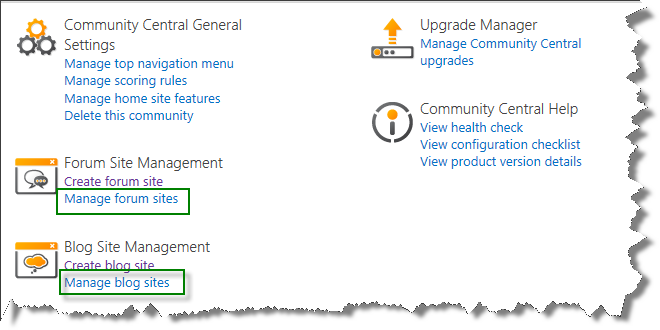


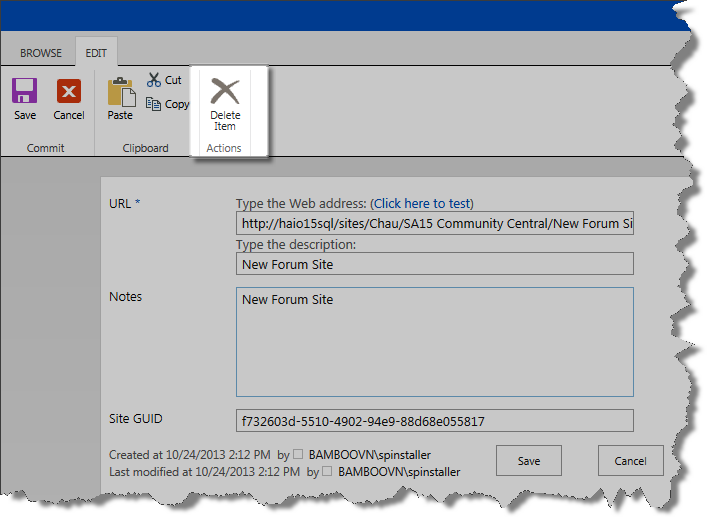
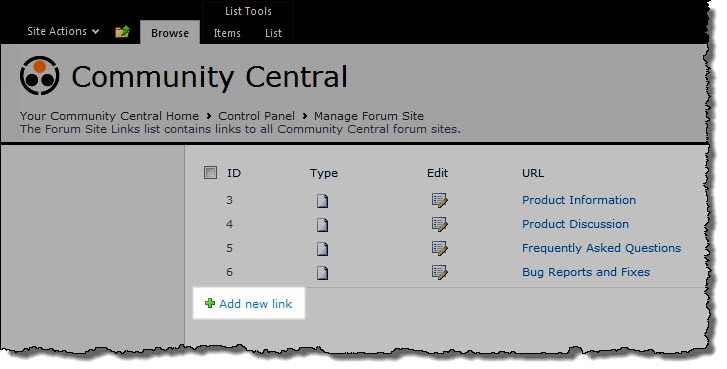

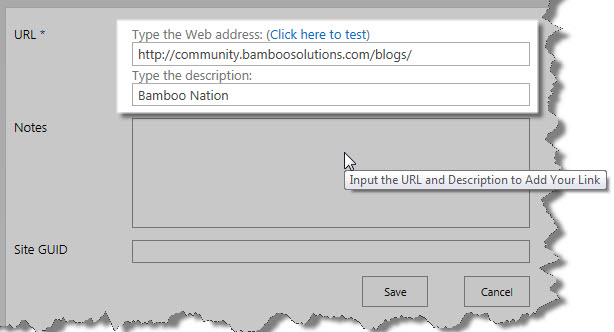

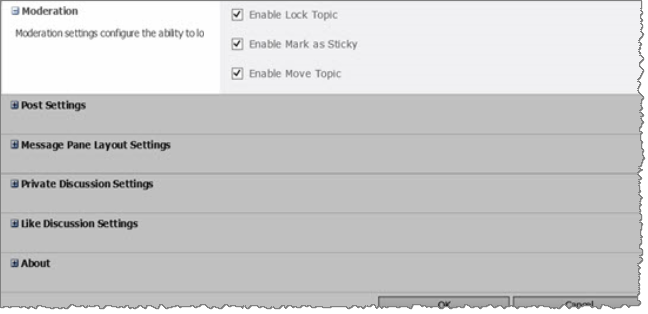
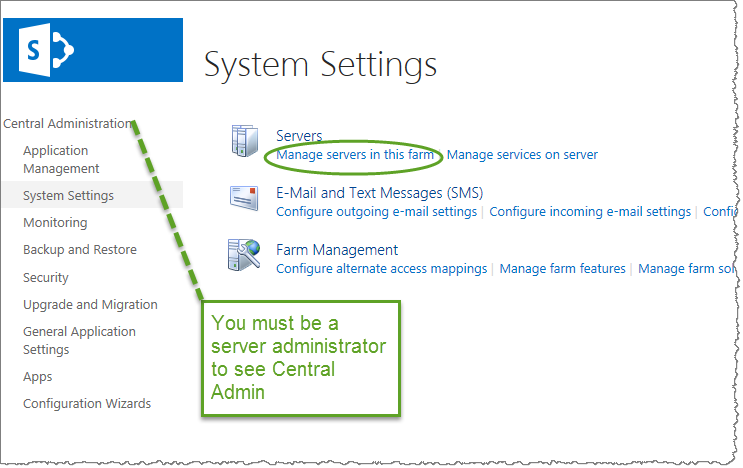 SharePoint 2013:
SharePoint 2013: Within the ribbon settings, users with the required permissions can lock a thread to prevent any further replies or updates by clicking the Lock Topic button in the List Tools > Items ribbon of the Discussion Board Plus list or by selecting the Lock Topic option in the item drop-down menu for a topic.
Within the ribbon settings, users with the required permissions can lock a thread to prevent any further replies or updates by clicking the Lock Topic button in the List Tools > Items ribbon of the Discussion Board Plus list or by selecting the Lock Topic option in the item drop-down menu for a topic.
 The top navigation in a forum site is unique to that site.
The top navigation in a forum site is unique to that site.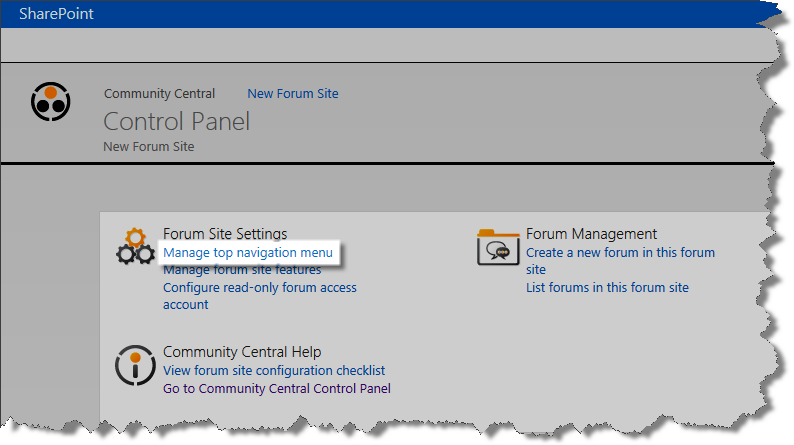
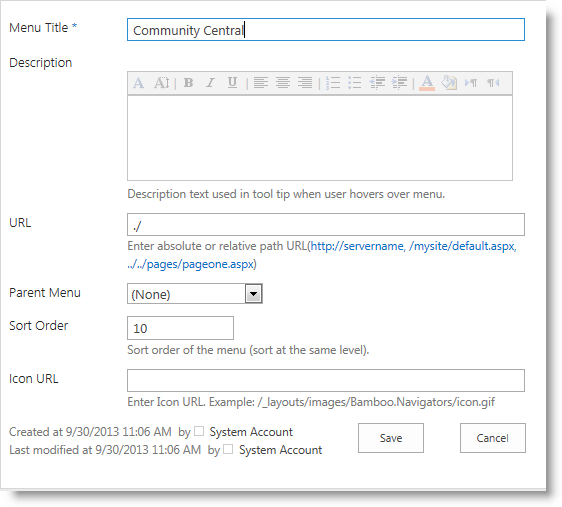


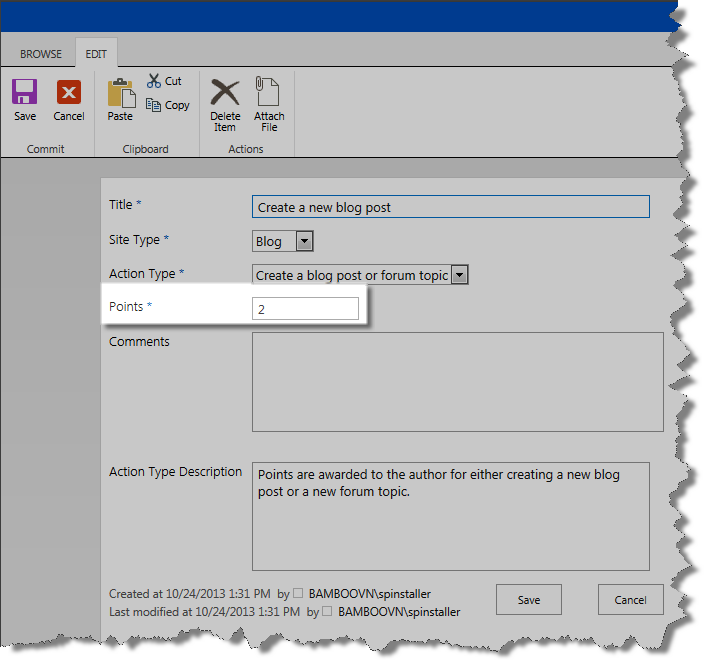 By default, the following Scoring Rules are provided by Community Central but you can customize the number of points awarded for Community Central activities.
By default, the following Scoring Rules are provided by Community Central but you can customize the number of points awarded for Community Central activities. You must be in the site administrator group or assigned Full Control permission to change your site banner. Also, you must have access to the picture library where you upload the image for the site.
You must be in the site administrator group or assigned Full Control permission to change your site banner. Also, you must have access to the picture library where you upload the image for the site.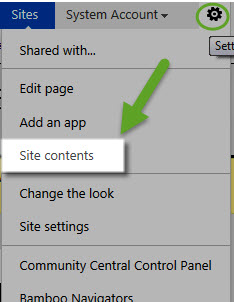


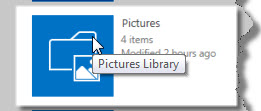
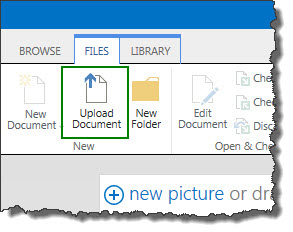
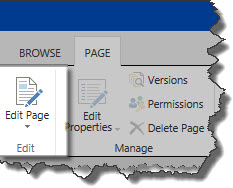
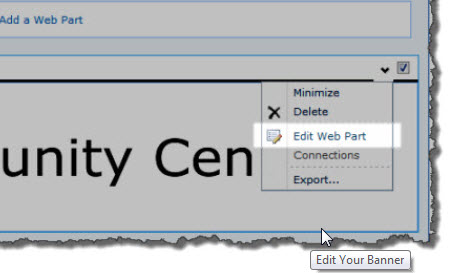
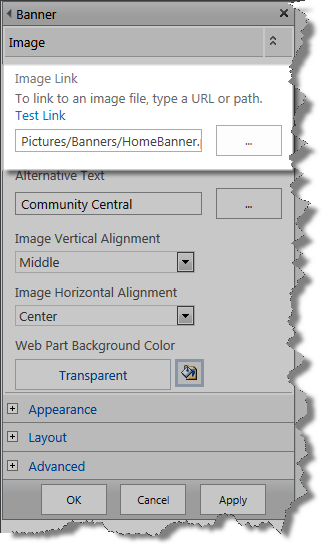
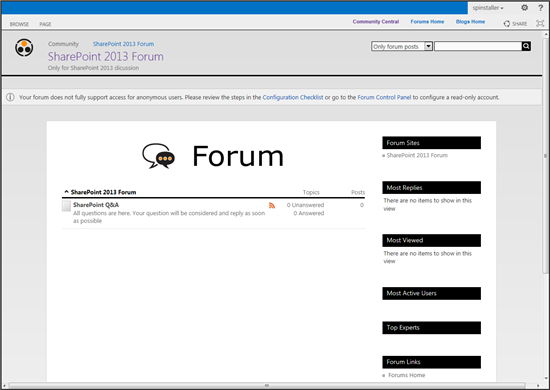 With a few minor updates, you can customize the look of your Community Central site including the site’s background color.
With a few minor updates, you can customize the look of your Community Central site including the site’s background color.
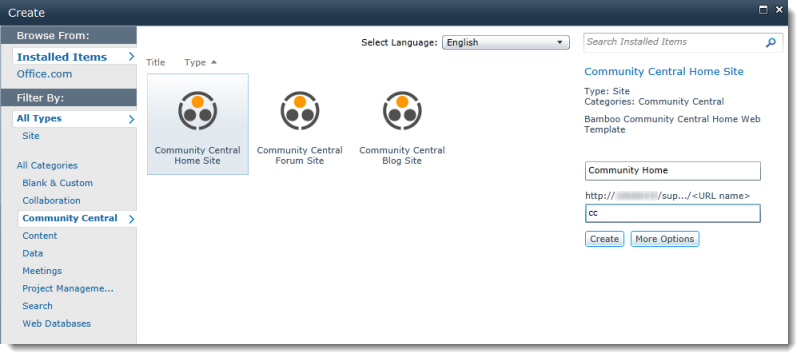


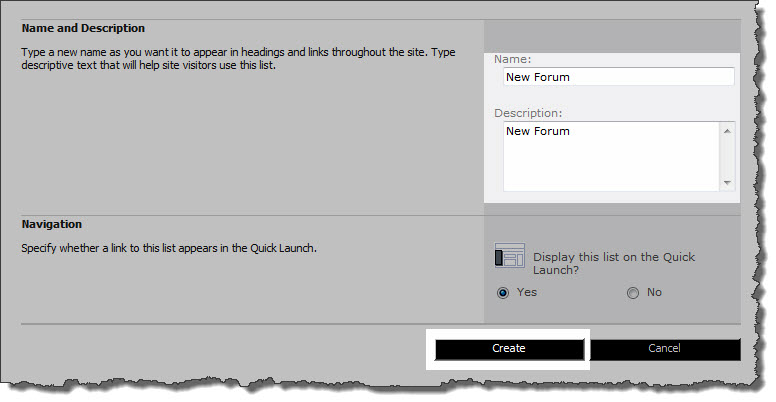
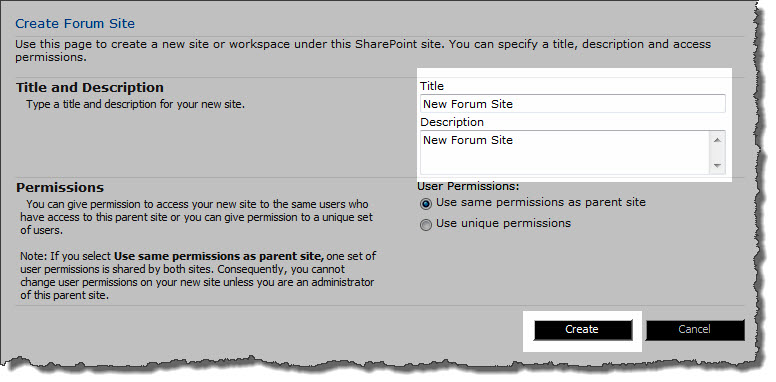
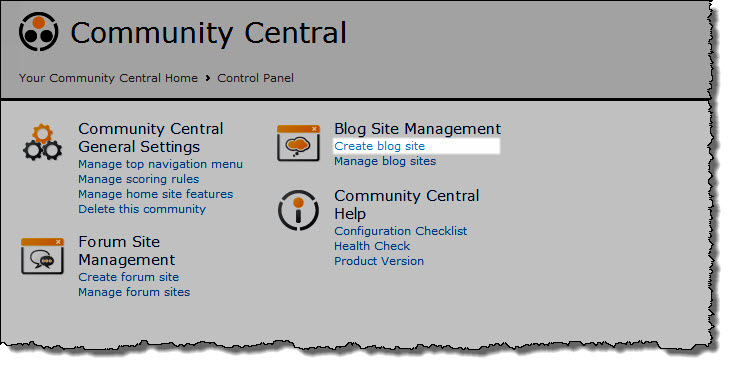
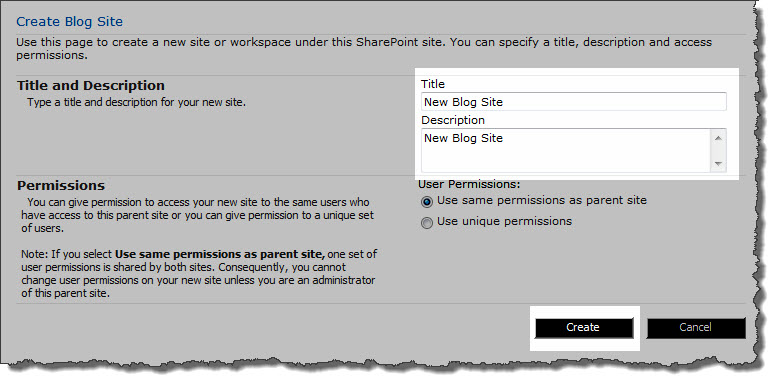
 Community Central Forum sites use Discussion Board Plus. To access Forum Settings for a Discussion Board Plus list, click the Forum Settings button in the List Tools > List ribbon.
Community Central Forum sites use Discussion Board Plus. To access Forum Settings for a Discussion Board Plus list, click the Forum Settings button in the List Tools > List ribbon. When Lock Topic is enabled, users with the
When Lock Topic is enabled, users with the 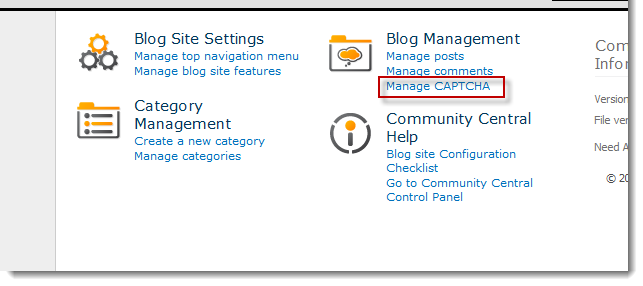

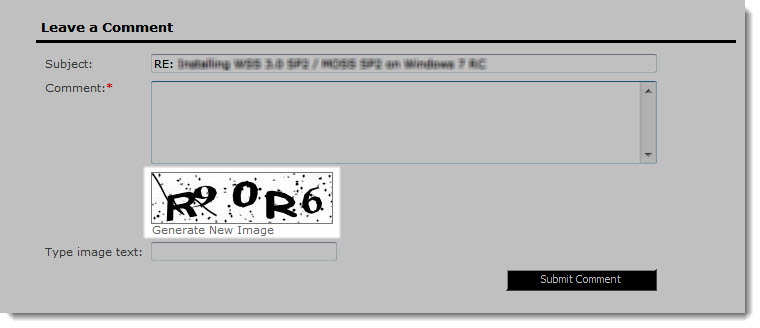
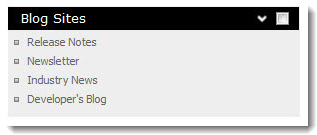

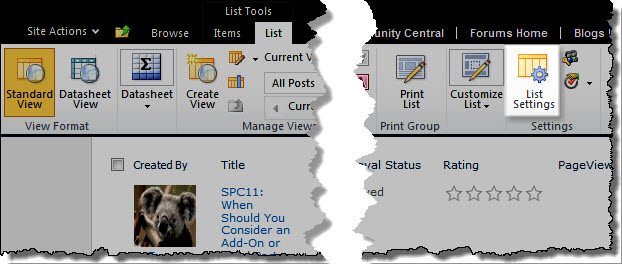
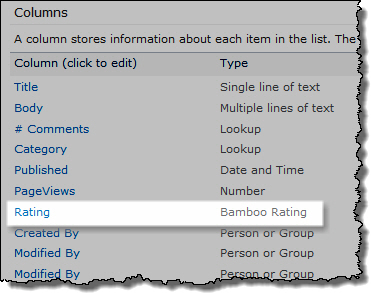
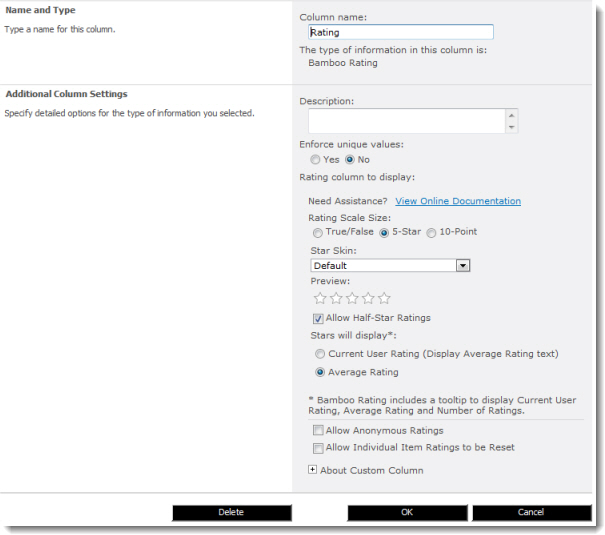
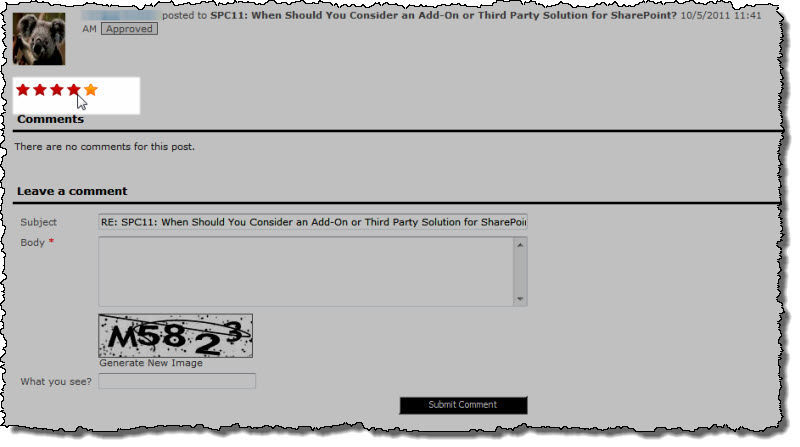 Readers can rate blog posts in Community Central. Ratings determine which posts are included in the Top Rated list and help identify relevant content for other community users. To rate a post, scroll to the bottom of the post and click on the rating that best matches your opinion.
Readers can rate blog posts in Community Central. Ratings determine which posts are included in the Top Rated list and help identify relevant content for other community users. To rate a post, scroll to the bottom of the post and click on the rating that best matches your opinion.





 You will find many of our products complement each other quite nicely saving you the time and trouble to write custom code. With Bamboo at the heart of your SharePoint investment, you gain access to a huge catalog of enhancements, components, and accessories that add the critical functionality your business requires.
You will find many of our products complement each other quite nicely saving you the time and trouble to write custom code. With Bamboo at the heart of your SharePoint investment, you gain access to a huge catalog of enhancements, components, and accessories that add the critical functionality your business requires.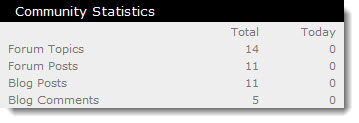 Community Central Home page statistics track participation across the entire community. Statistics displayed on the Community Central Home page include:
Community Central Home page statistics track participation across the entire community. Statistics displayed on the Community Central Home page include: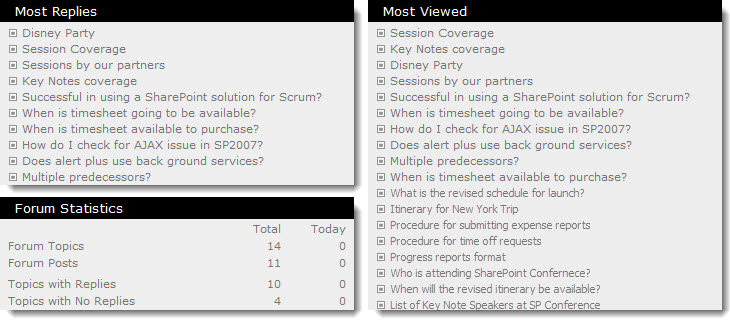 Forums Home page statistics track participation in all community forums. Statistics displayed on the Forums Home page include:
Forums Home page statistics track participation in all community forums. Statistics displayed on the Forums Home page include: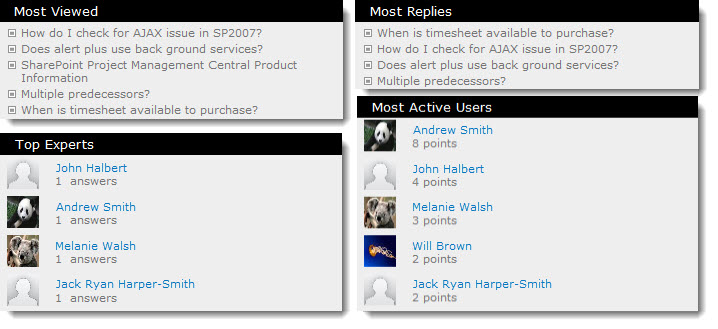 Forum site statistics provide a more in-depth view of forum participation and are specific to forums in that forum site. Statistics displayed on each forum site home page include:
Forum site statistics provide a more in-depth view of forum participation and are specific to forums in that forum site. Statistics displayed on each forum site home page include: Blogs Home page statistics track participation in all community blogs. Statistics displayed on the Blogs Home page include:
Blogs Home page statistics track participation in all community blogs. Statistics displayed on the Blogs Home page include: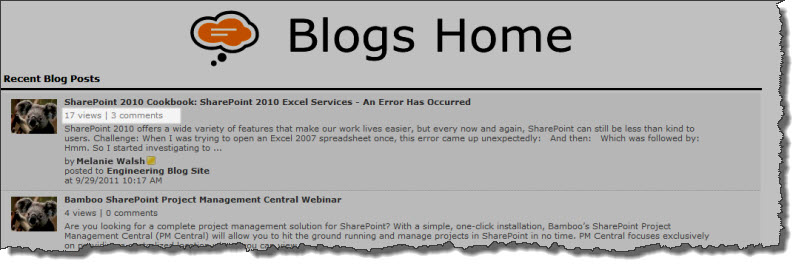 On the Blogs Home page and the blog site where a post was created, the number of views and comments is displayed for each blog post.
On the Blogs Home page and the blog site where a post was created, the number of views and comments is displayed for each blog post.  Blog site statistics provide a more in-depth view of forum participation and are specific to blogs posted to that blog site. Statistics displayed on each blog site home page include:
Blog site statistics provide a more in-depth view of forum participation and are specific to blogs posted to that blog site. Statistics displayed on each blog site home page include:
 On the Forums Home page, the total number of topics and posts for each forum.
On the Forums Home page, the total number of topics and posts for each forum.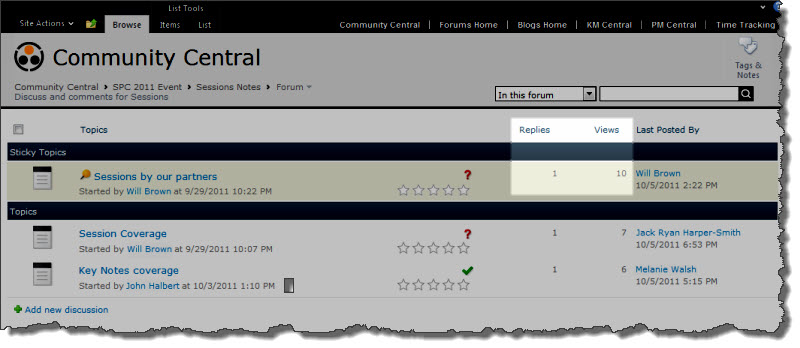 In the forum view, the number of replies for each post and the number of views for the topic.
In the forum view, the number of replies for each post and the number of views for the topic.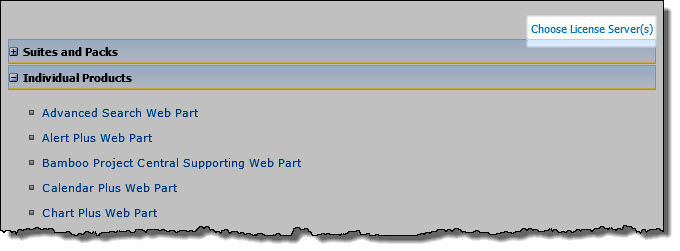

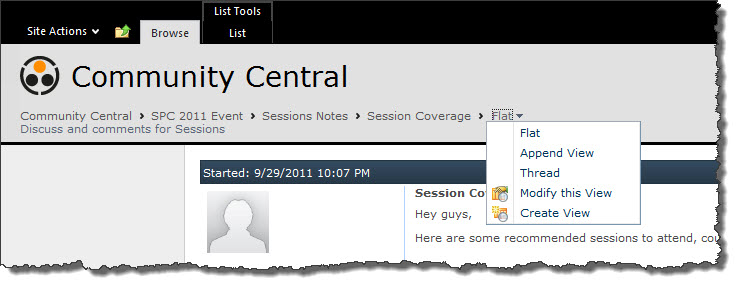
 The Blog Tools list contains links to common blog activities.
The Blog Tools list contains links to common blog activities. From the blog site page, click Create a post in the Blog Tools list.
From the blog site page, click Create a post in the Blog Tools list.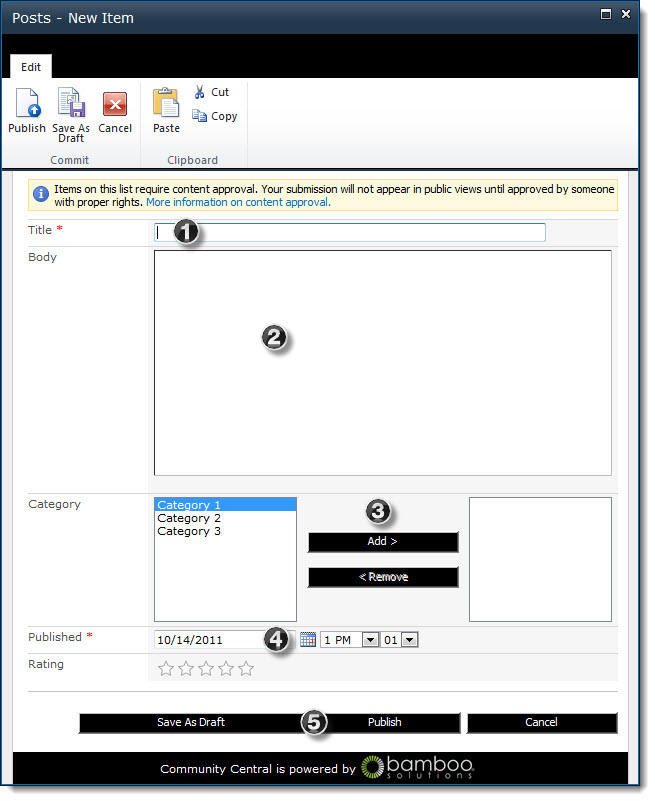
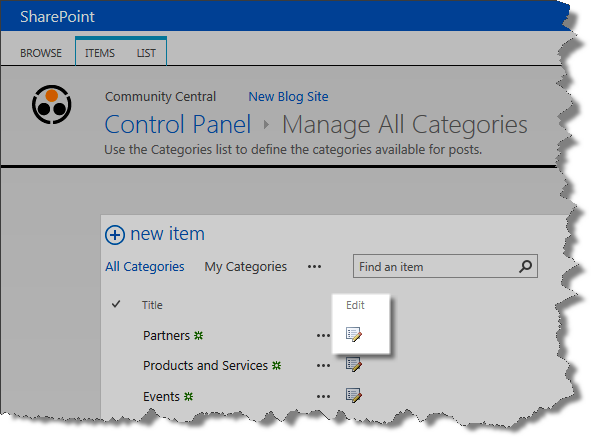
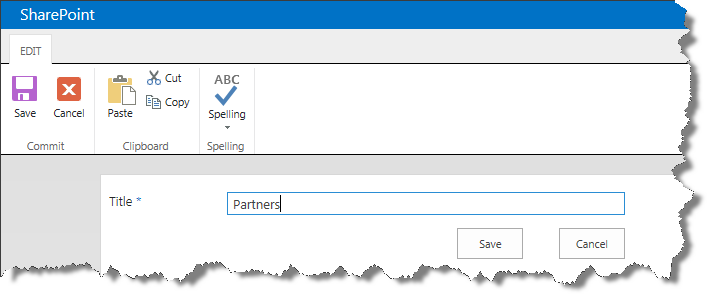
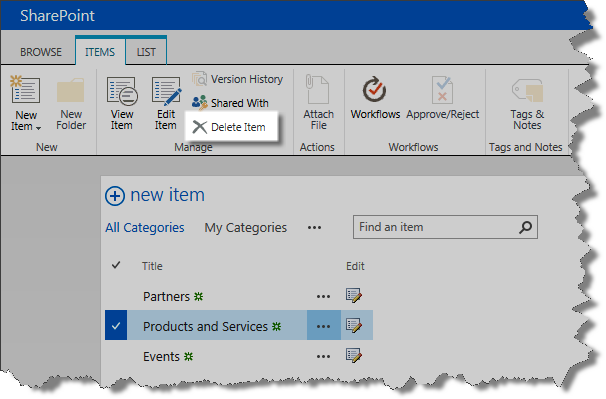
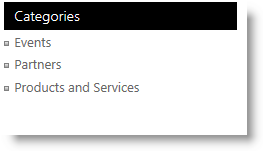 To browse categories, go to a blog site page and click a link in the Categories Web Part.
To browse categories, go to a blog site page and click a link in the Categories Web Part.




 To add a new announcement, click the Add new announcement link in the Announcements section of the Community Central Home page. Enter the announcement Title and Body.
To add a new announcement, click the Add new announcement link in the Announcements section of the Community Central Home page. Enter the announcement Title and Body.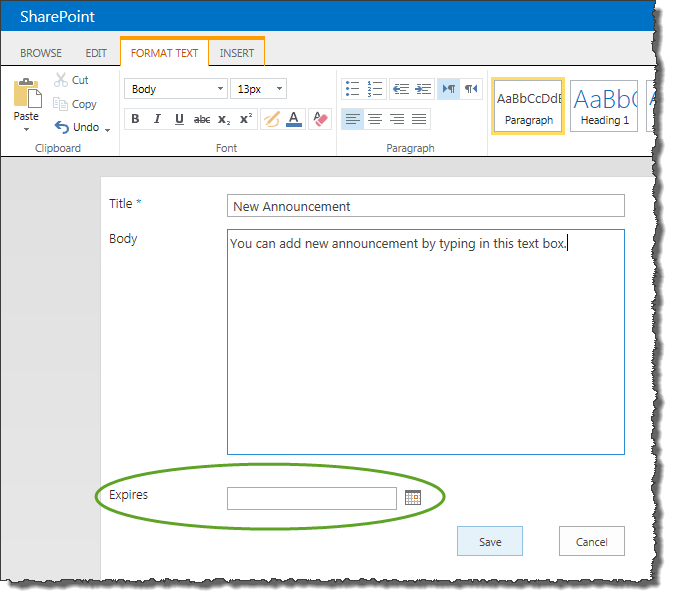 If you would like the announcement to expire on a certain date, select the date in the Expires field. When that date is reached, the announcement will no longer be displayed on the Community Central Home page.
If you would like the announcement to expire on a certain date, select the date in the Expires field. When that date is reached, the announcement will no longer be displayed on the Community Central Home page. To edit an existing announcement, click on it in the Announcements list and click the Edit Item button in the View ribbon. Click Save when you have finished making changes.
To edit an existing announcement, click on it in the Announcements list and click the Edit Item button in the View ribbon. Click Save when you have finished making changes. To delete an existing announcement, click on it in the Announcements list and click the Delete Item button in the View ribbon.
To delete an existing announcement, click on it in the Announcements list and click the Delete Item button in the View ribbon.
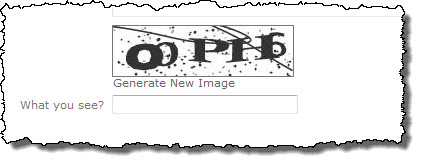


 When you extract the product EXE to a location on your SharePoint server, several folders are created that contain installation files and Setup program configuration files. The root level of the extracted file system includes the file Setup.bat, which launches the Setup program. The list below shows the installation files for the Tree View Web Part, as an example.
When you extract the product EXE to a location on your SharePoint server, several folders are created that contain installation files and Setup program configuration files. The root level of the extracted file system includes the file Setup.bat, which launches the Setup program. The list below shows the installation files for the Tree View Web Part, as an example.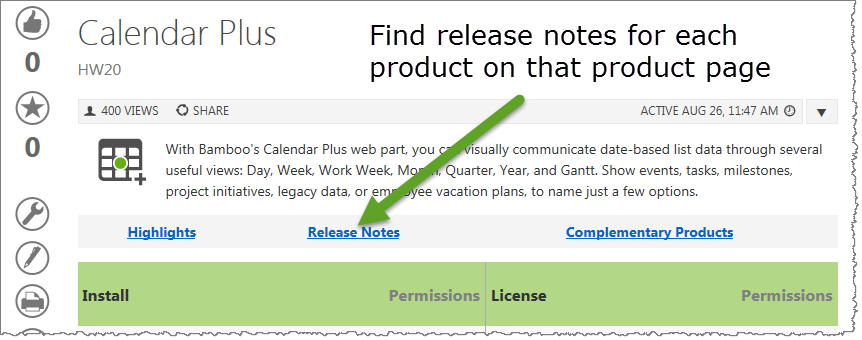 As you look at each product’s documentation page, you will see there is a link to the Release Notes for that product at the top of the page.
As you look at each product’s documentation page, you will see there is a link to the Release Notes for that product at the top of the page.